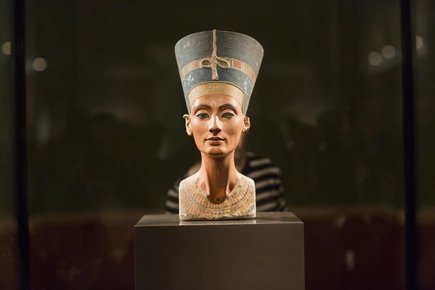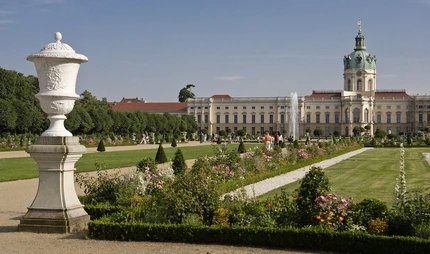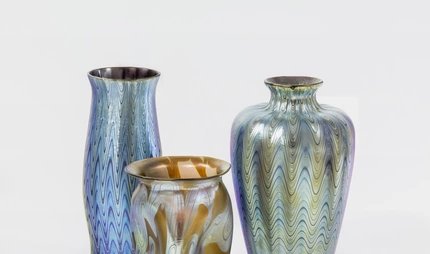
The Scharf-Gerstenberg Collection
250 years of fantastic art
The Scharf-Gerstenberg Collection shows major works of surrealism in the Stüler building of Berlin's historic Charlottenburg Palace.
At the beginning of the 20th century, Otto Gerstenberg is well known as a prominent German business man, as well as a passionate art collector. His collection features works by famous French Impressionists, including Monet, Renoir, Degas, Gauguin and the complete print work of Toulouse Lautrec. The Surrealist movement is also represented by well-known artists such as Dalí, René Magritte, Max Ernst and Paul Klee. During the Second World War, the collection is reduced considerably, and in 1961, it is left to Gerstenberg's grandsons, Walther and Dieter Scharf. The paintings of Piranesi, Klinger, Manet and Goya, as well as Dieter's own collection of graphics and paintings by Salvador Dalí, Jean Dubuffet, Max Ernst, René Magritte and Henri Rousseau form the basis of the museum. The museum opens again in 2008, thanks to a ten-year loan agreement, and is now part of the National Gallery of Berlin.
From Piranesi's prison paintings to the world of Dalí
The 250 artworks in the National Gallery's "Surreal Worlds" permanent collection - painting, sculptures and works on paper - is spread over three floors. It is a journey through 250 years of history lived through fantastic art. It begins with Giovanni Battista Piranesi's gloomy 'dungeon images' which depict power and decay, and the late work of Francisco de Goya: discomforting 'black pictures' from the 1820s. Late 19th century symbolism is represented in Max Klinger's graphic works, where the main themes are love, eroticism and death. Well-known names such as Max Ernst, René Magritte join Pablo Picasso, Paul Klee and Alberto Giacometti, united by the surrealist and symbolist elements in their works. More than any other surrealist, Salvador Dalí characterises the 20th century with the fantastical whimsy found in his work. The surrealist director Luis Buñuel collaborates extensively with Dalí. You can watch their films in the museum. Under Friedrich Wilhelm VI, Prussian architect Friedrich Stüler designs these buildings which are used as officer's barracks until 1859. The pavilion-like domes of the two neoclassical buildings are distinctive, connecting the museum beautifully with the Charlottenburg Palace. From 1967 to 2005, the East Stüler building also houses the Egyptian Museum.
Outstanding works
- Salvador Dalí: Study for „Banlieue de la ville paranoïaque-critique“ (1935)
- Hans Bellmer: La poupée (1936/1938)
- Max Ernst: Le Triomphe de l'amour/fausse allégorie (1937)
- Jean Dubuffet: Nez d'Apollo Pap (1953)
- René Magritte: Gaspard de la nuit (1965)
Charlottenburg's high-profile art landscape
A perfect compliment for your visit to the Scharf-Gerstenberg Collection is the Berggruen Museum just across the street. The art collector Heinz Berggruen emigrates to the United States in 1936. When he returns to Berlin some 60 years, he passes his 200 works of classic modernism onto the Prussian Cultural Heritage Foundation. On your tour, you will experience the who's who of the masters of the art world; Pablo Picasso, Paul Klee, Henri Matisse, Georges Braque and many more. Pablo Picasso's works alone account for 100 exhibits. Only a few metres away, the Bröhan Museum charts the development of modernism in fine art and culture. The heart of the exhibition is a collection of European Art Nouveau arts and crafts. The designers Hector Guimard and Henry van de Velde, as well as the furniture designer Louis Majorelle, are among its well known names. Be amazed at the precious porcelains and fine glass art by Daum Frères and Émile Gallé among others.
North of the Scharf-Gerstenberg collection rises the magnificent Charlottenburg Palace. This was the summer residence of Queen Sophie Charlotte until 1699. Stroll through its sumptuously furnished rooms and palace garden, and marvel at the famous collection of Royal porcelain. The Schinkel Pavilion in the park shines with paintings by Caspar David Friedrich and Eduard Gaerner. On the edge of the Middle Schustehruspark district, the Wilhelmian Villa Oppenheim stands proudly. Discover how the districts of Charlottenburg and Wilmersdorf evolve at the permanent exhibition "WEST!" Extraordinary painting and sculpture from the 19th century is found on the upper floor of the villa. The Berlin impressionists Max Liebermann and Walter Leistikow are also represented. Right next door, you will find the Scharf-Gerstenberg antique cast collection. Around 2,000 antique plaster casts are accessible to the public at the Freie Universität Berlin. You will also find faithful replicas of Greek and Roman sculptures dating from the past 3,500 years.
The Scharf-Gerstenberg Collection with visitBerlin
The Scharf-Gerstenberg Collection can be reached by underground line U2, alighting at Sophie Charlotte Platz. Alternatively, take the U7 to Richard-Wagner Platz. You have about a 15 minute walk from both stations. With the Berlin WelcomeCard, you get a 25% discount on the entrance fee. Children up to 18 years are free. With a Museumspass Berlin you have free entry into approximately 50 museums on three consecutive days. Dates for guided tours can be found at visitBerlin.
Opening hours
| Wednesday | |
|---|---|
| Thursday | |
| Friday | |
| Saturday | |
| Sunday |
Closed on Monday and Tuesday



